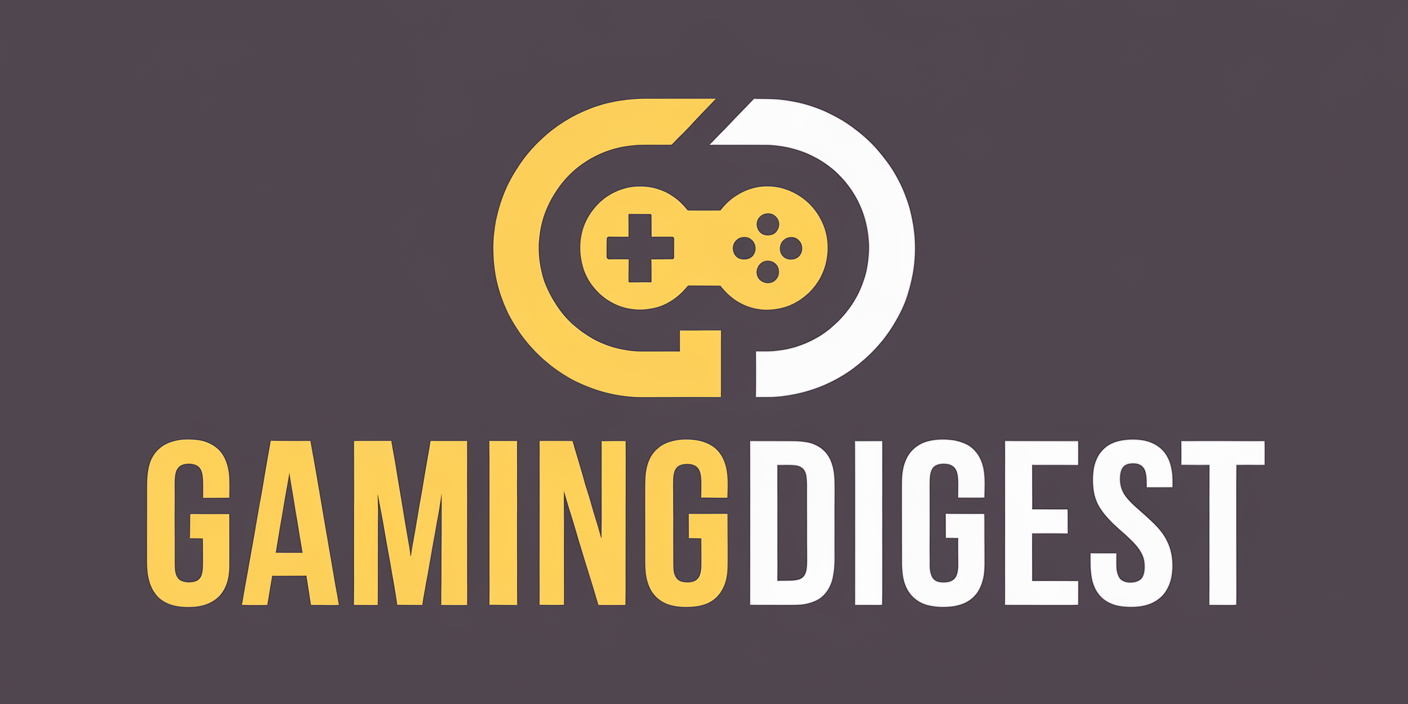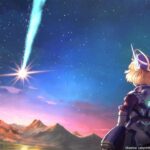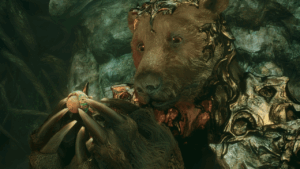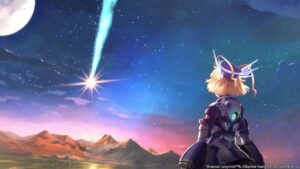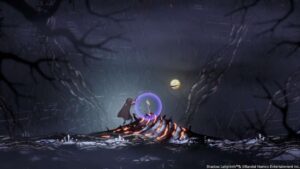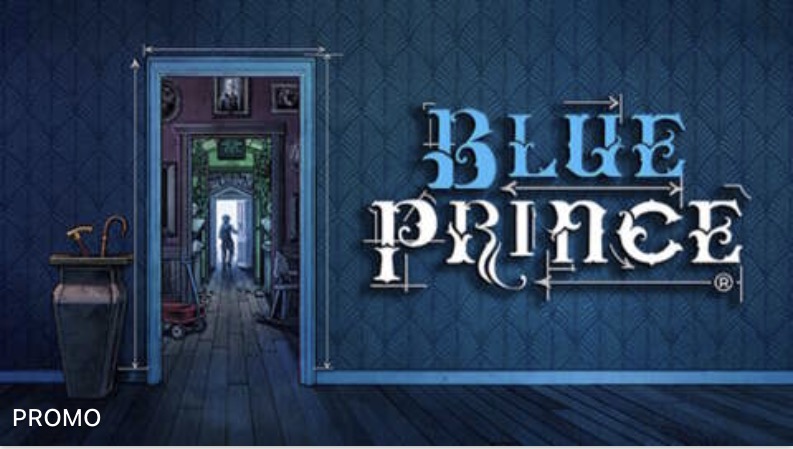Digital Extremes is hosting its 10th TennoCon this weekend to celebrate 12 years of Warframe and the beginnings of its new IP, Soulframe. Ahead of the celebration, we saw a new gameplay demo of Soulframe presented by Digital Extremes CEO Steve Sinclair, Soulframe creative director Geoff Crookes, and senior community manager Sarah Asselin, and spoke with two members of the Soulframe dev team.
Soulframe narrative designer Sydney Hills and lead designer Scott McGregor answered our questions about the game’s new skill system; its French-speaking witch, Verminia; the singing bear, Bromius; and more.
Size:
Want us to remember this setting for all your devices?
Sign up or Sign in now!
Please use a html5 video capable browser to watch videos.
This video has an invalid file format.
Sorry, but you can’t access this content!
Please enter your date of birth to view this video
By clicking ‘enter’, you agree to GameSpot’s
Terms of Use and
Privacy Policy
Now Playing: Soulframe: Preludes – Gameplay Spotlight Trailer
Soulframe is a free-to-play, open-world multiplayer RPG with a fantasy setting that sits in contrast to Warframe’s sci-fi world. It’s much more rooted in a connection to nature, encouraging exploration of Midrath’s mystical wilderness. Instead of guns and lasers, think bows and magic.
GameSpot: Earlier, Steve spoke about how skill trees felt “boring,” and maybe not the right fit for Soulframe as a live service game, while showing off concept art of a new skill system. Can you speak a bit more about the new way of managing and obtaining skills, and how it works better for Soulframe?
Scott McGregor: If you’re familiar with the early days of Warframe, we had a version of a skill tree. And we found it didn’t work. And then, we repeated the same problem again [laughs]. And in Soulframe, we were attempting to try to tie it to… a broader category of weapons to sort of make that pace work with the length of the game that we’re making. The games that we make, obviously, are thousands of hours. You know, we’re getting players, hopefully, in for a long time, right? We have lots of players that have been with us on Warframe for the full 12 years.
And designing systems that can be interesting and deep enough for that amount of time is a challenge. So, obviously, seeing where we were on the skill trees, we felt, again, it wasn’t going to work for us. So we’re pivoting to a system that’s more open-ended, and more something that you can add to quickly, and out of sync. Skill trees sort of suffer from this problem [where] you have to respect all the player’s investment in it.
So, a player that has been with us for a very long time… if you add something cool and new to the game, they can get the thing that’s at the very end of the tree, right? A new player that, you know, joined five years in, cannot. Or someone that just, you know, happened to watch a dev stream is like, “Oh, those new skills that you’re adding to the game look really cool. I want to check out this game.” And then they look at the skill tree and go, “Oh my God, this is thousands of hours just to get to the end where I can get this final new skill.”
Whereas an open-ended system, where you can add things and take away as we develop them, allows new and old players to experience those things. So I think that is one of the reasons why we’re doing this. It’s like making a system that can grow with us.
McGregor: It’s not 100% [one way or the other]. [Your] progression of the amount [of skills] that you can slot will be tied to the progression of the weapon category. So if you’re using bows, you’ll have like a bow skill ninja scroll type thing that you can slot in–different bow techniques and bow skills. And then, as you get better with more bows, you [will] have more slots to slot [skills] in. And then finding the individual skills will be based on what’s in the world. Like you can find it from an ancestor, or pick up a rare one from a drop, or something like that.
We met this French-speaking witch, Verminia–who I love by the way, because I speak French–and it was mentioned that language is important in Soulframe. Does language diversity tie into the narrative, or is it more of an overall vibe or feeling you were going for when expanding or fleshing out the world?
Sydney Hills: Yeah, definitely a big part of the soul of Soulframe is the different languages and the different accents. We’ve worked with voice actors from tons of different places already. Kim Bonifay, who voices Verminia–she’s French, [but] I think she’s located in London, England. Also, for the Bromius quest, we got Øystein Kanestrøm, who is the voice of Bromius. And he is Finnish, recording from Finland.
I know in my writing, I source a lot of inspiration from historical languages and historical slang. For our last update, we got a bunch of Scottish voice actors in for all of these NPCs around Dendria, which is our pseudo-Scottish town. And I learned so much good Scottish slang and it was so much fun [to learn]. A lot of the time, I would come into the recording sessions with some Scottish slang in the script, and the Scottish actors would be like, “So does this mean he’s drunk?” And I would be like, “Well, no, I thought that meant he was tired.” They’re like, “Nope, this means drunk.” Every Scottish slang [term] means drunk if you really get to the bottom of it [laughs].

Anyways, tangent, but definitely in the Bromius quest too, we had a lot of influence from Finnish mythology [and] Finnish language. There’s this word… a Finnish word, [and] it kind of means “tears of the deep forest spruce.” And again, it’s alcohol. It’s another euphemism for moonshine.
McGregor: Oh, really?
Hills: Doing that sort of early language [research] definitely helps inspire a lot of the themes. It definitely helped inspire the Bromius quest. And, you know, what would a tree cry? It would be sap.
What are some of the challenges you face when crafting a narrative for a live service game in these early stages, while players are still playing Preludes, and it’s not, you know, fully open yet? How far ahead do you have to look and plan for a game that wants to grow year after year?
Hills: Narrative-wise, it’s definitely a lot of guessing. There’s a lot. There’s some things that we know for sure. We have really big plot points surrounding some of our big villains and our big heroes, and people that we’ll need to save. But a lot of it… comes up organically in writing weapon descriptions or location text in-game.
It’s a lot of, you know, very slow building, and every once in a while I’ll insert another, “Okay, there’s another place in this world called ‘Skelflind.’ And now that’s a thing, and we can draw on it later. It’s a lot of following threads of what we find interesting and hoping that they’ll all fit together in the end.
That sounds really difficult, I’m not gonna lie [laughs].
McGregor: There’s a lot of planting seeds. You’re leaving little nuggets of stuff that you’re going to come back [to] years later and be like, “Oh, well, this is what I meant back then about that thing that I only mentioned in one sentence.” But we expand that later. I always found that was super interesting about the Warframe development. Stuff that was, you know, vaguely referenced in very early lore, becomes this great big thing later on. And I think that was fantastic. And I think Soulframe will follow that same path.


McGregor: It’s a different category. So, sidearms are our subsection of weapons that can only fit into that slot. I won’t say that we won’t allow you eventually to mix and match and put a sidearm into your main [slot] or your main into your sidearm [slot]. That could end up being a thing, but currently, right now, we have them in two [different] buckets.
But there will be different options in your sidearm. So you’ll be able to get a magic casting wrist gauntlet for your sidearm. Or you’ll be able to get a wrist-mounted bow. It isn’t always just gonna be blades or maces, or stuff like that. There’ll be a variety of weapons in both categories.
I think community manager Sarah [Asselin] was talking about it, and she said that the sidearm is very distinctly not [a] secondary weapon.
McGregor: Yeah… I think Steve [Sinclair] is rubbing off on Sydney, too. They like to name things–give them names for Soulframe. Which, you know, makes my life difficult because I always stumble on these things when we’re trying to talk about them in public. Because it’s like, “It’s your sidearm,” [but no,] “It’s your secondary.”
I think that’s what’s great about the games that we do make is [that] we go that little bit extra to make sure that they have a flavor and a uniqueness. It isn’t just the same thing that everyone uses. We try to make sure we put something on it that makes it unique to our game.


McGregor: For me, currently the coolest one I think we’ve got was the alt fire for the bows. ‘Cause [it’s] like a rain of [arrows] in an area of effect. I thought that was a nice play on something that’s sort of… there’s bows in a lot of games, and there’s a lot of ways to do it. And I thought that felt really unique to us.
The mechanic that we’ve been really buzzing about in the demo is–if you saw it in the live demo–was the [ability to] reflect magic back and forth. It was like a wizard on wizard battle. So, you can actually ping-pong that projectile back and forth, like a parry, right? With swords, that’s how it works. If you’re timing it right, you can actually bounce that back and forth. And every time that projectile goes back and forth, it gets a little bit more powerful. So, landing that shot could feel very amazing if you are the one sending it. That was one that’s been super popular in the studio, that feels really awesome.
Hills: Magic ping-pong. Has anyone called it that yet?
McGregor: I don’t know [laughs]. I’m waiting for you guys to name it so I can stumble over it later.
Hills: Magic ping-pong. Write that down [laughs].
McGregor: And then, future things. For me, it’s Motes. We have a Mote system in the game–it’s just kind of bland. It’s just stats. And we’ve come up with this [new] idea that the Motes are creatures that live in your sword and give your sword unique abilities.
As that system progresses and starts to come together, and we add to it and change it, it’s starting to really feel unique to the game. So, I’m excited about where that’s heading as a future thing I’m working on.


Soulframe is built on a story tied to nature. And we can see that in environments and characters like the bear, Bromius, in the demo. Was there any emphasis being put on adding more talking or singing animal encounters or companions? Because I’m imagining a Disney princess vibe, but just more dangerous.
Hills: Yeah, the current lore is it’s just our Omen Beasts who can speak. All of the other animals in-game, currently, are just cute little chittering noises. Though we were talking [about]–[and] someone made a joke today about [it having] a Pied Piper vibe–a bunch of little singing and dancing animals following behind a bard. And I thought that would be really cute if they sang.
But no, I think for now, our Omen Beasts… embody almost the collective spirit of the animal species that they stand for. So Bromius is the collective spirit of all of the bears in Midrath. And so, because of that, he has this extra source of power that allows him to communicate with the Envoy. And I’m sure we’ll keep building on that with new Omen Beasts in the future.
Are there any stories or tales you take inspiration from when crafting the narrative that people might not expect?
Hills: Since working on Soulframe, I’ve gotten super into historical mythologies. And when we first started talking about doing a bear Omen Beast, I definitely did my little research to see what kind of cultures have bears in their myths. And there’s a lot of them. We ended up going with the Finnish inspiration because Finland really is passionate about their bears.
Still, [bears] persist in the mythology [of several cultures]. Back [in] BC–like prehistoric or early historic, ancient antiquity era, they have… I wrote it down… Otso! [He] is this mythological bear that’s a part of this really, really awesome poetry epic from Finland that is kind of a creation myth. And it has the bear as the king of the forest. And he’s kind of equally feared and respected, which I thought is an interesting thing to think about with Bromius.
You’ll see more of him in the rest of the demo, but he’s more than a big, scary guy. He’s got a really sweet and soft side that I’m really excited about.
I mean, he was singing to a plant.
Hills: [laughs] Yeah! You’ve seen it. It’s there.
Yeah, I can’t wait to see the rest of the demo.
Soulframe is still in pre-alpha. The game is set to launch for PC later this year.
